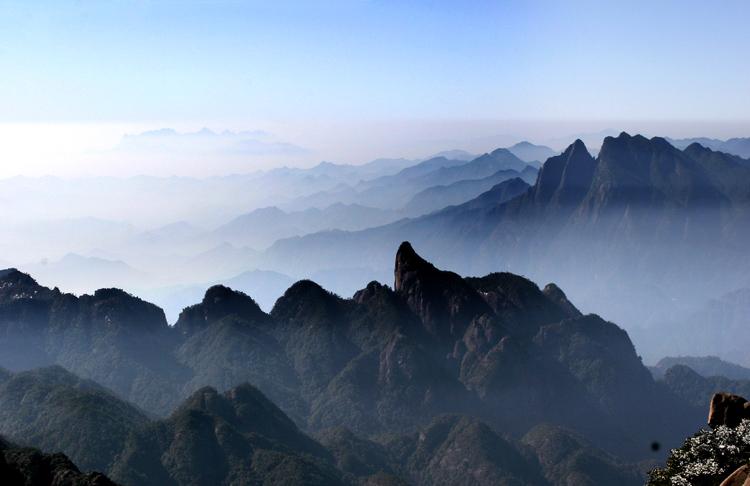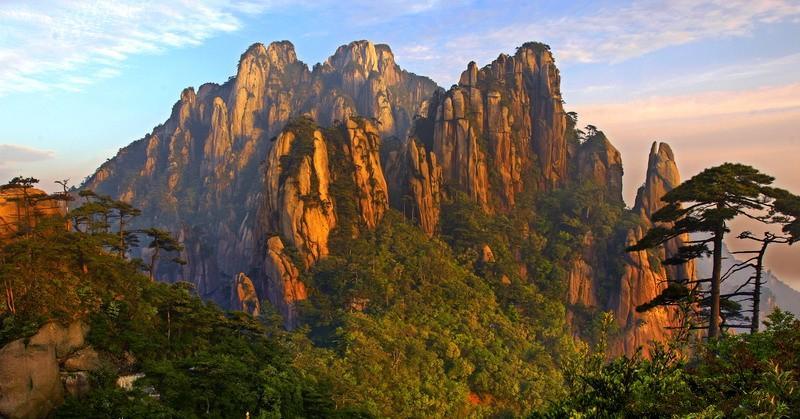
Sanqing Mountain is located in the west of the Huaiyu mountain range in the northeast of Shangrao City, Jiangxi Province. Sanqing Mountain is a renowned Taoist mountain well-known for its exceptional scenic quality, marked by the concentration of fantastically shaped pillars and peaks: 48 granite peaks and 89 granite pillars, many of which resemble human or animal silhouettes. The three main peaks (Yujing Peak,Yuxu Peak and Yuhua Peak) looked like the originators of Taoism Yuqing, Shangqing and Taiqing sitting on the summits, hence the name Sanqing Mountain (Literally meaning Three Distincts in Chinese characters). Amongst the three peaks, the Yujing Peak is the highest, at an altitude of 1819.9 meters. Fantastically shaped pillars and peaks are the most typical attractions of this resort, which is also graced with wonderful springs, cascading waterfalls and historic sites of Taoism.

In Sanqing Mountain, the unique ancient Taoism-related buildings, carefully and intricately planned, are in good condition. Taoism is embodied in the Taoist constructions on Sanqing Mountain, in a concrete and viewable way. The Sanqing Palace is the center of the ancient construction complex. Everything from the temple, the halls, the houses to springs, pools, bridges, tombs, pavilions, pagodas, all of the 230 multiple stone carvings and stone inscriptions were arranged according to the Taoism principles and had profound implications. Connecting with each scenic spot and integrating with the natural landscapes, the construction complex forms a philosophical and picturesque layout of the Eight Trigrams Picture from the Book of Changes. Some Chinese archaeological experts commented, It can rival the construction in Wudang Mountain .
Transportation has been dramatically improved and there are a complete line of facilities. The resort is emerging as a key tourist destination in Jiangxi Province.
In 1988, Sanqing Mountain was designated by the State Council as one of the second group of key national scenic areas. It was listed as a UNESCO World Heritage Site in 2008.





